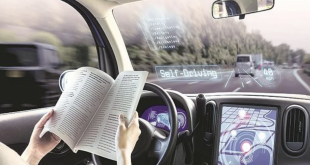
More than a third of new dog-owning motorists had to ‘pup-size’ their cars over the last year by buying a bigger or more practical motor to accommodate their pets, according to new research.
The pandemic saw a surge in interest in canine companions, with online puppy searches soaring by 115 per cent.
A survey of 2,000 drivers with dogs revealed a fifth (22 per cent) bought or adopted their most recent dog after the start of lockdown.
More than a third (35 per cent) of recent dog owners said they had to buy a larger or more practical vehicle because of the pet, spending an average of £7,594.
The data suggests of an estimated 800,000 puppies and dogs bought in the UK each year, 280,000 (35 per cent) would result in their owners buying a new vehicle.
This in turn would mean new owners “pupgraded” their car to accommodate their new canine friends, spending nearly £2.1 billion in total (£7,594 on average per vehicle).
To help new, or future, dog owners to find the right vehicle for them, CarGurus has developed a new tool, the CarGurus Pupgrader – which suggests the right vehicle based on the size of their dog and whether or not they also need to transport other family members.
It was created after research by CarGurus found more than a quarter (27 per cent) of dog owners admitted they should have thought more about the car they owned when getting their pet – with this number increasing to 61 per cent among the ‘lockdown dog owners’.
“We’re a nation of animal lovers, so helping people to know what to look for in a pet-friendly car is vital, especially given our research found that more than a quarter of dog owners drive with their dog in the car more than once a week,” said Ivan Aistrop of CarGurus.
“Looking after a dog is not just a case of making sure they’re eating the right diets, sleeping in the best bed or wearing the smartest collar – it’s important that owners have a suitable car, and for many new dog owners this is often an afterthought.”
The research also delved into what features dog owners were looking for when purchasing a car.
It found 38 per cent wanted wipe clean surfaces inside the car, the same number wanted rear doors and 31 per cent said durable materials were an important feature which impacted their buying decision.
As a result, 40 per cent said they opted for an SUV, with 23 per cent choosing a family hatchback and nine per cent going for an estate car.
When out on the road, 39 per cent of drivers reported keeping their dog on the back seat, while 28 per cent put their dog in the boot.
Almost half (43 per cent) of dog owners said easy access was an important feature when car searching, with the same percentage saying a large boot made all the difference.

The most popular type of dog among respondents was a mixed breed, followed by a Labrador Retriever, Border Collie, German Shepherd and Jack Russell terrier.
The average price paid for a pooch before lockdown was £437 – but those who have picked up a puppy over the past 12 months have seen that figure increase to a whopping £1,015.
Gary McKee, fundraising and marketing manager at the National Animal Welfare Trust (NAWT), added: “Part of being a responsible pet owner is ensuring you do your due diligence when searching for a car that suits both the needs of your family and your dog.
“Owners need to think about sufficient space, safety and comfort for their animals in much the same way they would for themselves and the human members of their family.”
Top dog travel tips from NAWT:
- Check your emergency breakdown cover to find out how your dog would travel in the event of a vehicle recovery.
- If planning a long journey, ensure you allow time for comfort breaks for your dog to let them stretch their legs and go to the toilet.
- Ensure the area in which your dog will be travelling is set to a comfortable temperature.
- Never leave your dog in a hot car. Even on a cloudy day or when parked in the shade, a car can become an oven in a very short space of time. At 22 degrees outside, a car can heat to an unbearable 47 degrees within an hour, leaving a dog unable to reduce their body temperature by panting. This leads to heatstroke, which can be fatal.
- Either provide your dog access to water throughout the journey with a non-spill water bowl, or ensure you have enough water to offer them at every comfort break.
- Avoid feeding your dog within the two hours before a long journey to avoid travel sickness.
- Back-seat protection or a double-sided boot mat can save your car from both damage and dirt. They work to protect your car interior from sharp claws as well as muddy paws!
- In the autumn/winter months, particularly if your dog loves a muddy puddle, it’s a good idea to keep a towel in the car to dry them before setting off on your travels again.
- Some dogs are unable to, or are uncomfortable with, jumping into a car. In those situations, a dog ramp can help your beloved pet climb safely and comfortably into your vehicle.
 Automotive Blog Automotive Blog brings you the latest news, car reviews and information on the automotive industry.
Automotive Blog Automotive Blog brings you the latest news, car reviews and information on the automotive industry.



